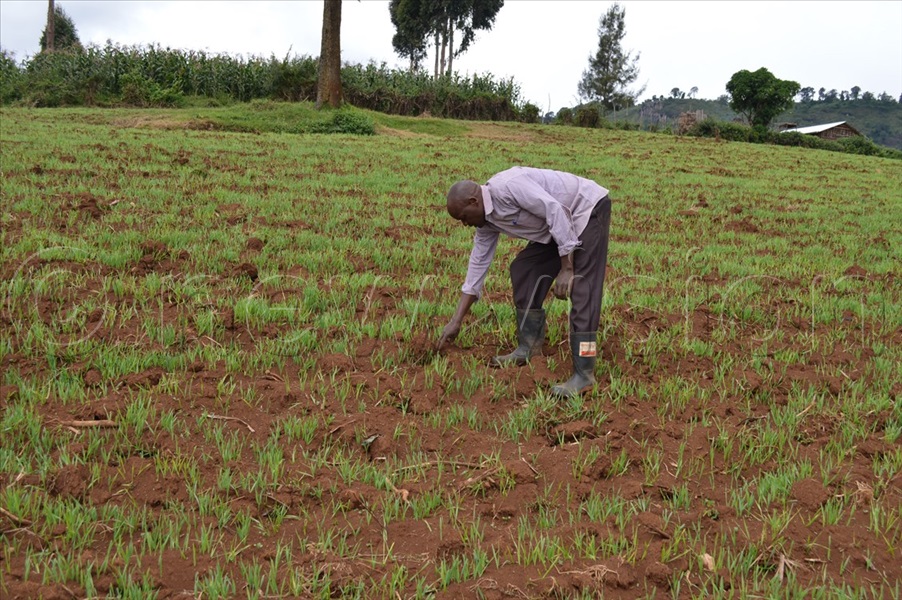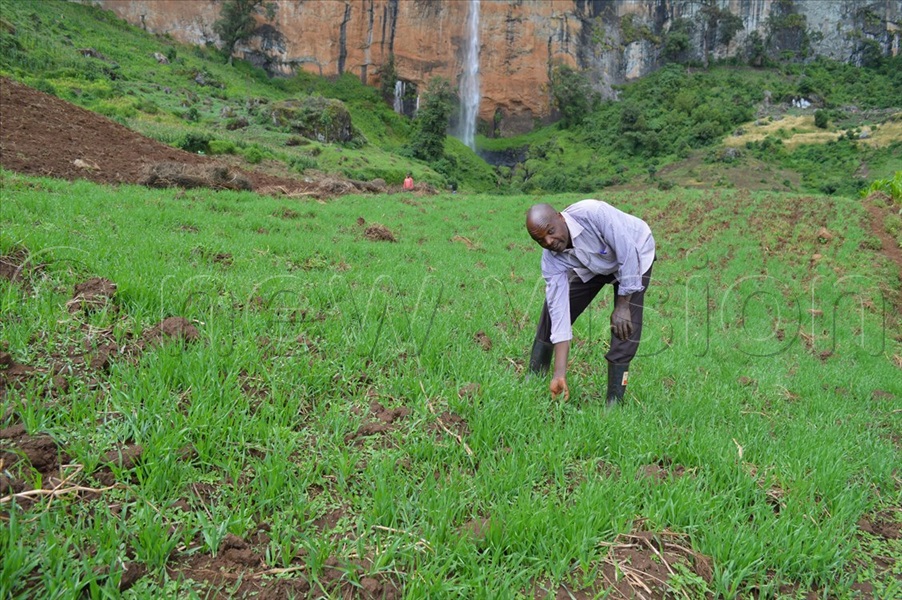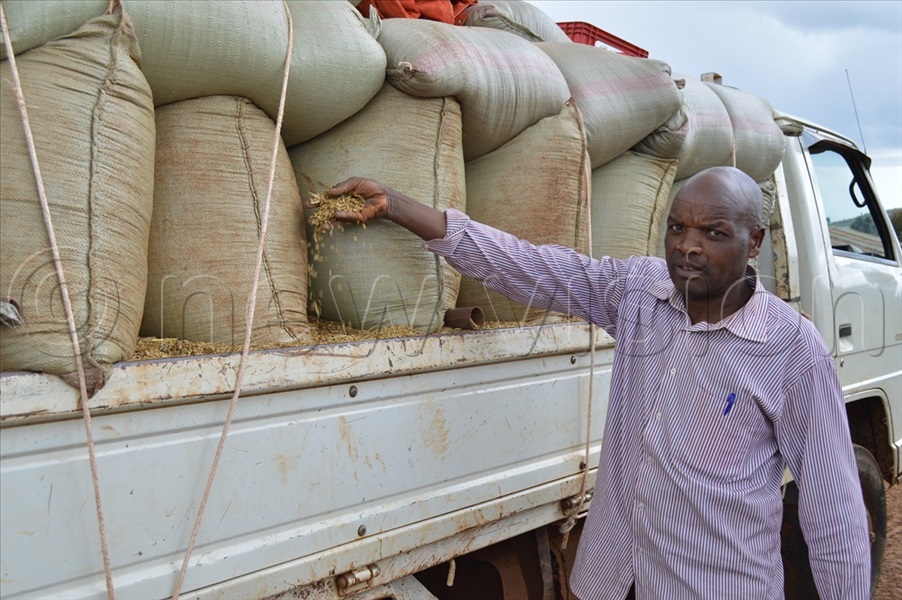By Umar Nsubuga
Moses Kiptala, a resident of Mengya village, Piswa parish in Kween district earns his upkeep from farming.
He grows 10 acres of barley from which he raises enough money to provide for his family.
He started growing barley in 2012 when Nile Breweries Limited supported farmers in the district.
He says the crop fetches more money than other cereals, adding that in the villages of Benet, Piswa and Kitany a group of 41 members, last year took the innovation and co-operation to another level.

The group under their umbrella Mengya Integrated Farmers Association, pooled resources and hired over 25 acres of land to cultivate barley on a commercial scale.
Kiptala, the chairperson of the group, says they were driven to venture into the initiative by the desire to improve the welfare of their families.
Kiptala says their group started ten years ago.
“We started as a farmers’ group and we were growing Irish potatoes and maize, which we would sell to Kapchorwa, Bukwo and Mbale towns. With time, we resolved that each member contributes sh25,000 as registration fees into the group,” he says.
According to Kiptala, during monthly meetings, each member contributes sh20,000 towards the pool. With a total share capital of sh3.5m, we decided to hire land to grow barley on a commercial scale.
He says they started with Irish potatoes last year to loosen the soils and changed to barley, this year. Each of us has been cultivating barley on smallholder plots, so we knew the potential gains to be made from the crop.

Why farmers are interested in barley?
The conditions in Kween favour barley growing. The area has good rains, the crop is planted twice a year and harvests are done in August and January respectively.
“Barley is a delicate crop where you have to do the right thing at the right time,” says Alice Chemutai who has grown barley for two years.
According to Chemutai, to utilise one acre, a farmer invests sh60,000-sh80,000 for preparing the garden, but just clearing the gardens, sh20,000-sh35,000 as a spraying charge for herbicides and fertilisers and sh60,000-sh70,000 as harvesting fee.
“From an acre of land, a farmer is assured a harvest of at least one tonne, sometimes the harvests can go higher with the best practices,” Chemutai says.

Martin Kapcheromit, another farmer, says on average, each acre of barley yields 20 bags, each weighing 100kg.
On a vast lush field overlooking the forested mountain, farmers are patiently waiting to start reaping to fruits of their concerted effort.
How to plant barley
The crop is planted twice a year and harvests are done in August and January respectively.
In the first season, planting is in late March and early April, while in the second season, planting is between August and September.
Barley thrives in cool weather conditions, an altitude of 1,300m to 2,500m above sea level and well-distributed rainfall of 350mm throughout the year.
Barley requires a fine, smooth and even seed bed.
If the field is virgin, it should be ploughed thrice to break the large soil crumbs into fine particles. Fields that have been farmed before only require ploughing twice.
Foreign materials like maize stalks and chaff must be removed to leave the field clear.
-Land preparation of the fields designated for barley growing should start 2-3 months before the expected date of planting as this will enable weed seeds to germinate and be ploughed down. Previous crop residues can be incorporated into the soil to enable them to decompose and enrich the soil for the subsequent barley crop.
-Land preparation operations such as disc ploughing and disc-harrowing should be done only when it is required to minimise the risks of pulverising the soil and causing soil erosion. The use of sharp-pointed implements like a small axe is recommended for maximum soil and moisture conservation.
-Barley fields should preferably be on gentle slopes because farmers on steep slopes practise soil and water conservation through terracing.
-It is recommended that barley should be planted in rows. The rows should be 18cm apart (half-foot). Barley mustn’t be planted too deep because this can be detrimental to seedling emergence and tillering (forming branches).
The seed should be planted 2-3cm (half an inch) deep. It is recommended that seeding/planting is done when the soil is moist to ensure maximum and even germination.
Its germination time is one to three days and grows under cool conditions. It is more tolerant of soil salinity than wheat, has a short growing season and is also relatively drought tolerant.





